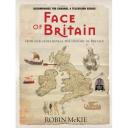Some scientists have hypothesized that Australian aboriginals received a portion of their DNA from an ancient hominid species called Homo erectus, which for a short time was contemporaneous with modern man. A recent study published in PNAS (Proceedings of the National Academy of the Sciences) set out to answer this question by analyzing mtDNA and Y-chromosome samples from aboriginals.
A total of 172 mtDNA and 522 Y-chromosome previously published and new sequences from aboriginal Australians and New Guineans were analyzed for mtDNA and Y-chromosome variation and were compared to the current world haplogroup tree. All of the mtDNA sequences were members of the M and N founder branches, and all of the Y-chromosome sequences fell into the C and F founder branches.

 How many founding Asian groups braved their way across the Bering land bridge during those frigid Pleistocene ice ages?Was it a single wave of people who later developed into the three distinct linguistic and cultural groups that populated the
How many founding Asian groups braved their way across the Bering land bridge during those frigid Pleistocene ice ages?Was it a single wave of people who later developed into the three distinct linguistic and cultural groups that populated the